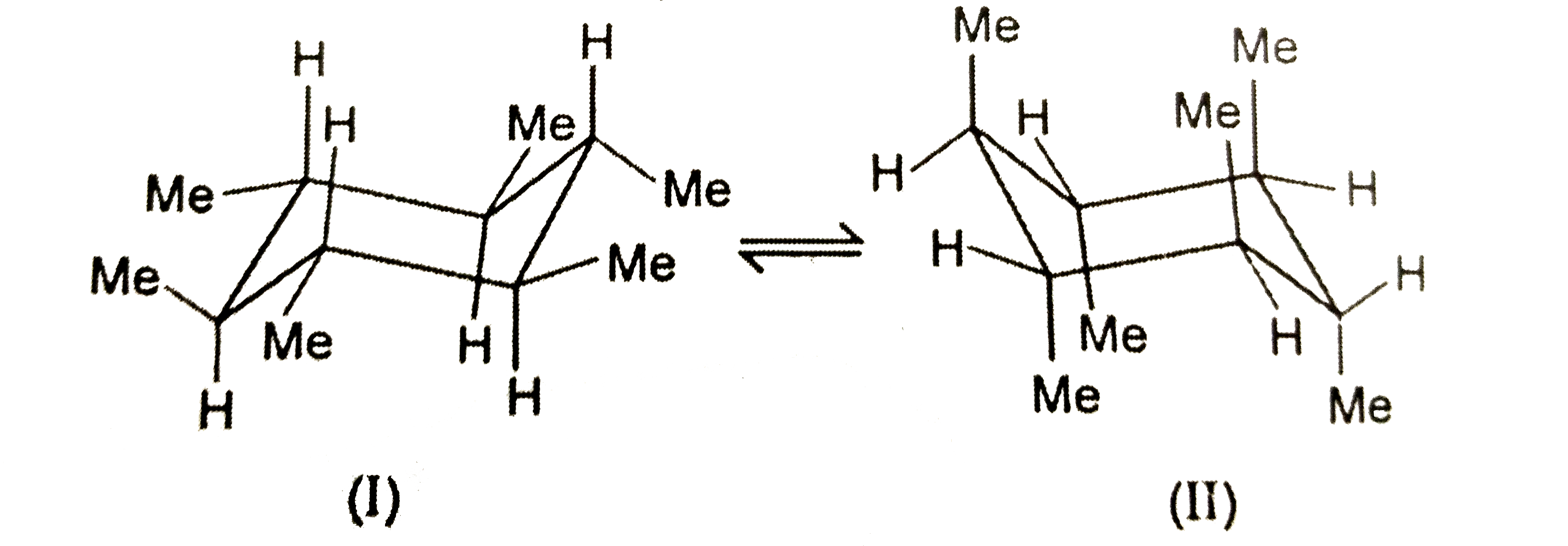Out of Cu2Cl2 and CuCl2, which is more stable and why?
To determine which compound, Cu2Cl2 or CuCl2, is more stable, we need to analyze the oxidation states of copper in both compounds and the implications of these oxidation states on stability.
1. Identify the oxidation states of copper in both compounds:
- For Cu2Cl2:
- Let the oxidation state of copper be x.
- The equation for the compound is:
2x+2(−1)=0(since Cl has an oxidation state of -1)
2x−2=0⟹2x=2⟹x=+1
- Therefore, the oxidation state of copper in Cu2Cl2 is +1.
- For CuCl2:
- Again, let the oxidation state of copper be y.
- The equation for the compound is:
y+2(−1)=0
y−2=0⟹y=+2
- Therefore, the oxidation state of copper in CuCl2 is +2.
2. Analyze the stability based on oxidation states:
- Generally, higher oxidation states of transition metals are more stable due to increased charge density, which leads to stronger interactions with surrounding ligands (in this case, chloride ions).
- Cu2+ in CuCl2 has a higher positive charge compared to Cu+ in Cu2Cl2.
3. Consider hydration enthalpy:
- Hydration enthalpy is the energy released when ions are surrounded by water molecules. It is proportional to the charge of the ion and inversely proportional to its size.
- Since Cu2+ has a higher charge than Cu+, it will have a greater hydration enthalpy, which contributes to the stability of the compound.
4. Conclusion:
- Based on the higher oxidation state and the resulting greater hydration enthalpy, CuCl2 is more stable than Cu2Cl2.
Final Answer:
CuCl2 is more stable than Cu2Cl2 due to the higher oxidation state of copper (+2) in CuCl2, which leads to greater hydration enthalpy and stability.
- For Cu2Cl2:
- Let the oxidation state of copper be x.
- The equation for the compound is:
2x+2(−1)=0(since Cl has an oxidation state of -1)
2x−2=0⟹2x=2⟹x=+1
- Therefore, the oxidation state of copper in Cu2Cl2 is +1.
- Again, let the oxidation state of copper be y.
- The equation for the compound is:
y+2(−1)=0
y−2=0⟹y=+2
- Therefore, the oxidation state of copper in CuCl2 is +2.
- Generally, higher oxidation states of transition metals are more stable due to increased charge density, which leads to stronger interactions with surrounding ligands (in this case, chloride ions).
- Cu2+ in CuCl2 has a higher positive charge compared to Cu+ in Cu2Cl2.
- Hydration enthalpy is the energy released when ions are surrounded by water molecules. It is proportional to the charge of the ion and inversely proportional to its size.
- Since Cu2+ has a higher charge than Cu+, it will have a greater hydration enthalpy, which contributes to the stability of the compound.
- Based on the higher oxidation state and the resulting greater hydration enthalpy, CuCl2 is more stable than Cu2Cl2.
CuCl2 is more stable than Cu2Cl2 due to the higher oxidation state of copper (+2) in CuCl2, which leads to greater hydration enthalpy and stability.
Topper's Solved these Questions
- BOOK - NCERT EXEMPLAR ENGLISHCHAPTER - D AND F-BLOCK ELEMENTSEXERCISE - Short Answer Type Question20videos
D AND F-BLOCK ELEMENTS
- BOOK - NCERT EXEMPLAR ENGLISHCHAPTER - COORDINATION COMPOUNDSEXERCISE - Long Answer Type Question5videos
COORDINATION COMPOUNDS
- BOOK - NCERT EXEMPLAR ENGLISHCHAPTER - ELECTROCHEMISTRYEXERCISE - All Questions67videos
ELECTROCHEMISTRY
Similar Questions
Knowledge Check
- Question 1 - Select One
Out of 2-chloroethanol and ethanol which is more acidic and why ?
A2-Chloroethanol due to +I effect of ClBEthanol due to +I effect of CH3C2-Chloroehtanol due to −I effect of ClDEthanol due to −I effect of CH3
a. Among Cu⊕,Cu2+ and Cu which is the largest in size and why?
b. Which element in periodic table has the highest IE (ionisation energy)?
c. Which element, Mg or Al, is more metallic and why?View SolutionWhich out of O+2andO−2 is more stable on the basis of bond order calculations ?
View SolutionWhich of the two: O2NCH2CH2O– or CH3CH2O– is expected to be more stable and why ?
View SolutionOut of cis and trans isomers, which isomer is more stable ?
View SolutionOut of Cr2+ and Cr3+, which one is stable in aqueous solution?
View SolutionOut of 2-chloroethanol and ethanol which is more acidic and why ?
View SolutionOut of 2-chloroethanol and ethanol which is more acidic and why ?
View Solution

